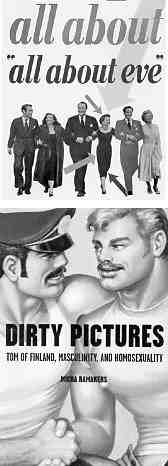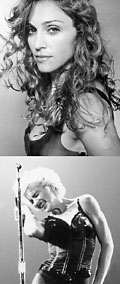All About “All About Eve”: The Complete Behind-the-Scenes Story of the Bitchiest Film Ever Made
by Sam Staggs (St. Martin’s Press, $24.95)
DESPITE ITS SECONDARY title, Sam Staggs’ All About “All About Eve” isn’t all about bitchiness. Sure, there’s a catty quote here and there, such as when Bette Davis refers to Marilyn Monroe: “That little blonde slut can’t act her way out of a paper bag!” But for the most part, Staggs’ book concerns the nuts and bolts—from the Edith Head outfits Davis wore to Barbara McLean’s style of film editing—involved in making director Joseph Mankiewicz’s film about an aging actress, her manipulative understudy, and the crowd of theater folk that surrounds them. An instant classic, the 1950 film starred Davis, Celeste Holm, Thelma Ritter, and, among others, the budding starlet Monroe. In addition to wrangling an interview out of the supposed real-life Eve, Staggs touches upon the film’s camp legacy, its manifestation in musical form as Applause, its impact on pop culture, and its stars’ future trajectories (Monroe was the only cast member whose career ascended). Staggs’ exhaustive research is borderline obsessive: He describes the “few brown coffee stains, one the size of a half-dollar, the others no larger than a penny,” he discovered on Davis’ copy of the script, and his mention of Showgirls as an Eve knockoff signals where pages should have been omitted altogether. The lengthiness of the text can mostly be forgiven, however, thanks to Staggs’ exquisite storytelling. As opposed to malicious gossip, his tales about cast members’ capers and Hollywood in its heyday zestfully reanimate the famous and the forgotten.
Dirty Pictures: Tom of Finland, Masculinity, and Homosexuality
by Micha Ramakers (St. Martin’s Press, $27.95)
THE DRAWING of Tuoko Laaksonen (a.k.a. Tom of Finland) laid some of the first planks upon which a gay culture could be built. In Dirty Pictures, art historian Micha Ramakers comments, “In a world dominated by homophobia . . . [Tom] . . . held up a ‘mirror’ to gay men in which they could see themselves as they were not: as real men, living in Tomland, where gay desires and acts were not considered a sad perversion, but ruled.” Using over 70 images from the Finnish artist’s repertoire, Dirty Pictures tracks Tom’s career as an advertising employee with a knack for sketching to an occasional freelancer for the ’50s bodybuilders mag Physique Pictorial to a “highly talented producer of superb-quality pornography.” The book simultaneously illustrates how Tom’s creative transformation paralleled that of the gay male self-image. The minority began the 20th century as slender, effeminate members of a “third sex,” and by the ’70s, for better or worse, they ended up beefy “Christopher Street clones” with an uncanny resemblance to Tom’s drawings. Ramakers touches upon loaded issues inherent in Tom’s work—the “macho camp” and representation of African Americans and Nazis, for example—but he uses an overly academic writing style and has a tendency to rely too heavily upon others’ opinions. This analytical and dispassionate book doesn’t do justice to the hot flesh and flexing muscles found within.








